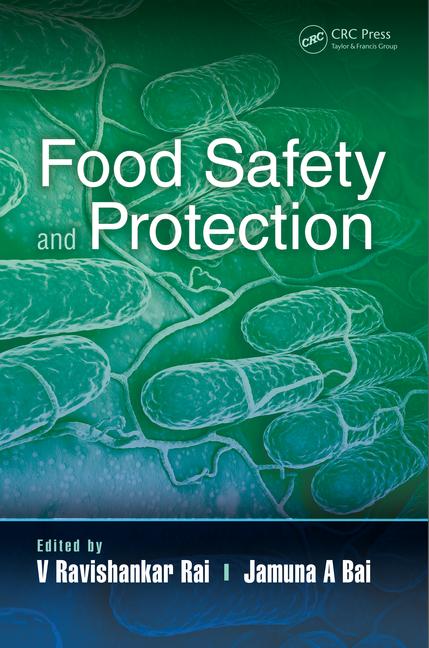An Investigational Team Approach to Plant Pathogen Contamination

Recent foodborne illness outbreaks have reinforced that finding the source of a microbiological contamination issue can be arduous, often requiring weeks or months to resolve. Roughly one-quarter of foodborne outbreaks, according to the World Health Organization, are closely associated with cross-contamination events involving poor hygiene practices, insufficiently cleaned or poorly designed equipment, contamination via food handlers, processing or inadequate storage.
Experience has also shown us that highly difficult-to-find contamination issues can arise from a number of unusual and untold sources requiring the expertise of highly trained investigators.
Food microbiological investigators must possess a vast knowledge of plant operations to solve contamination issues. These highly trained professionals must also possess the ability to build teamwork among operations teams to unearth information and gather insightful data.
Wind and Storm
One of the major challenges facing food microbiological investigators is to get plant operations to provide them with all of the important facts that will allow them to do their job effectively. Usually, the first encounter with the facility management team entails getting the “wind and storm” report. Far too often, these reports are filled with opinions and speculations from employees who are closest to the contamination issue at hand. More often than not, there is an insufficient amount of data available to reach a science-based conclusion.
It is paramount for the investigator to gather the background information from existing data that are both accurate and reliable. While opinions and speculations can sometimes be helpful, it is best to place them in a box on a distant shelf to prevent them from allowing prejudice to taint investigations. Going forward, the remainder of this article will address general investigational approaches that can be tailored to both dry and wet processing environments.
List of Events
History has taught us that a vast number of events can lead to microbiological contamination issues. For the purpose of this article, an event can be defined as “any occurrence, factor or influence that will result in a finished product becoming contaminated with a pathogen.” The following is a rather small list but covers a number of event-causing concerns:
• Personnel changes
• Supplier/ingredient changes
• Equipment modifications
• Construction activities
• Modifications or changes in sanitation practices
• Process changes
• Exceeding capacity of production
• Surrounding plant location or environment
• Used equipment purchases
• Inability to perform deep-cleaning activities when required
• Facility changes (flooring, drains, conveyors)
After the initial opening meeting with management—and digesting the wind and storm report—the investigator can begin the interview process. Groups to be interviewed include: quality assurance (QA), maintenance, operators, sanitation, production and procurement. Ideally, these groups should be able to help address the 11 preceding points that are typically behind event occurrences.
It is very important to reassure personnel that they need to be open and extremely candid in their responses in addition to asking questions themselves. Many times, the answers are sitting in the minds of the people who work in the facility every day, but little do they realize that each possesses a piece of the puzzle. For example, an operator faced with a Salmonella contamination issue once asked me if insects were important in our investigation. After I answered yes and explained that Salmonella need food and water to reproduce, he took me to a production area where there was a minor insect infestation. This seemingly innocuous interchange led us to the source of the contamination with little to no heavy lifting.
Maintenance is the ideal area to begin on-site plant interviews. It may not be a secret, but maintenance and QA groups usually do not converse on food safety issues as much as they should. As such, environmental monitoring (EM) teams at food manufacturing plants should comprise members from each group, and they should meet regularly, much like Hazard Analysis and Critical Control Points teams.
On the whole, maintenance teams are charged with equipment upkeep, nonroutine repairs, moving and installing equipment, and other important activities on the plant floor. This intimate knowledge enables them to see microbial harborage that everyday operational, sanitation and quality control personnel do not generally come across. An unfortunate fact of life is that this information is not always communicated to other critical team members.
Without much fanfare or very many pats on the back, maintenance teams bear the extremely important responsibility of keeping the plant running seamlessly. Empowering them to be part of EM teams and tapping into their knowledge of the production facility can be highly useful in finding solutions to events. Maintenance personnel can provide insightful information and observations on inadequate cleaning or sanitation practices, improper assembly of equipment, poor equipment design, nonhygienic alterations of equipment and other important considerations to investigators.
Floor Time
Now that the management and departmental personnel have been interviewed, it is time to establish the working team that will assist the investigator during the walk-through of the facility. This team will have a selected member from the departmental interviewing process (QA, maintenance, operators, sanitation, procurement, etc.). This is to ensure proper communications occur and an effective resolution is achieved for the event under investigation. It is highly recommended that key members who actually work on the production floor be present for the length of the investigation.
Often, the actual investigations need to be conducted during downtime or a sanitation shift. This is usually the third shift or a weekend changeover. This is required because equipment needs to be disassembled to properly determine the root cause of product contamination. Experience has shown us that many contaminants are trapped or caught deep inside processing equipment. High-pressure hoses, improper equipment design, lack of deep cleaning and a host of other factors contribute to the proliferation of microbes in equipment.
The tear-down of equipment during an investigation often needs to be very granular—down to literally nuts, bolts and washers. Interfaces between metal-to-metal and ultrahigh-molecular-weight and other plastic/rubber materials provide excellent harborage areas for pathogens, especially Listeria monocytogenes. Often, normal and routine sanitation practices do not reach as deep into equipment as food, water and pathogens do. Contaminants that enter the product stream will almost always work their way out. For highly ubiquitous pathogens, a small and barely visible crack is akin to the Grand Canyon.
Operating most equipment means shaking, rattling and bouncing will exacerbate this liberation. Deep cleans should be established by the plant at a frequency after sufficient data have been collected through visual observations and other quantitative tests. The age of the equipment, its design, the food matrix employed and the frequency of use will also be used in determining when deeper cleaning and sanitation efforts are warranted.
Equipment modifications to better accommodate production schedules are preferential. However, the EM team should review schedules to ensure product will not be compromised.
Data Review
Another part of the investigational process is to evaluate previous data that the company has generated with respect to the current event, as well as in the period leading up to the event. To take the investigation to the next level, it is necessary to start with accurate and reliable data to see on what and how decisions were based and what actions were implemented. More importantly, can you depend on these data to further your investigations?
Two points to consider on this topic include: reviewing all aspects of the actual laboratory generating the data for product testing and EM (in-house or external) and the technique and procedures surrounding how any samples or swabs have been collected, stored, processed and tested during this time.
Having a sound base of data that has been vetted will go a long way in starting the investigation off soundly. Data that have not been properly vetted will have the potential to stall the conclusion of finding the root cause or prevent such closure from occurring at all. One brief example: determining if the EM program in its search for pathogens solely employs swabs versus sponges for all of its routine EM work.
These data may be providing a higher negative or absent picture of the processing environment where much smaller surface areas are submitted for testing. Submitting samples such as gaskets, tape and sweepings is acceptable to the investigator, and sponges and swabs are not the only tools in the toolbox for solving an event and determining root cause.
The site-selection process for the investigators (if determined to be an environmental event) is where the so-called rubber meets the road. In a dry processing environment, a wise man once told me, “Just follow the water.” This is actually very good advice. Even though we know that Salmonella can exist in dry environments for years, the organism probably started its journey at that specific harborage area with the help of a water source. Discussing with the team historical events that may have occurred such as roof leaks, water pipe breakage, wet construction activities, whether the area was used as a wet processing environment previously, etc. will help determine whether there is a resident evil waiting to be released into the processing environment at the next production expansion time.
An additional area the investigator [otherwise called the microbial crime scene investigator (MCSI)] should review is traffic patterns. These may reveal some interesting scenarios. This is where a team approach comes in again. Understanding where and how people, ingredients, tools, forklifts, contractors, etc. move around and through a food production area is imperative for the MCSI to understand and ultimately solve any case presented to him or her. A typical example is roof access. Determining how roofs are accessed can point to a root cause for how a pathogen, that is, Salmonella or L. monocytogenes, may gain entry into the facility and finally into the product lines.
Questions to the working team would include:
• Who has access to the roof?
• Are shoes changed prior to entering and exiting the roof, and if so, how?
• Are environmental samples taken at the roof access points and how often?
• Are coverings for uniforms worn when working on the roof?
• Do these people have free access to areas where exposed product, packaging or ingredients may become contaminated?
• Are other mitigation strategies implemented that prevent such product contamination?
• Is potentially contaminated equipment or roofing materials carried back through the plant or bagged and dropped from the roof to the ground?
These are just very brief examples of the type of questions and approach that an investigator needs to be comfortable with and ask when on-site and problem solving.
A honed skilled set is needed to study collected data and other correlating information. Mapping the processing is a highly helpful and resourceful tool in managing environmental data. There are a few commercially available programs, such as EnviroMap, that can help processing plants implement new and improve existing EM programs.
Case Closed
From a hard-boiled detective to an easygoing counselor, food microbiological investigators must wear many hats in their search for answers. Communications prior to, during and following the completion of investigations will aid in the development of investigators, but they also will educate and inspire plant personnel on the importance of implementing and maintaining protocols to prevent events from occurring again.
Stephen J. Decker is director of technical services for Merieux NutriSciences and an accomplished microbiologist with over 35 years of food industry experience, specializing in food spoilage investigations, Hazard Analysis and Critical Control Points and Good Manufacturing Practices, EM programs, risk analyses and due diligence evaluations. With over 750 consulting assignments across a broad spectrum of food plants to his credit, Decker provides expert legal and regulatory support services to clients.
Looking for a reprint of this article?
From high-res PDFs to custom plaques, order your copy today!








